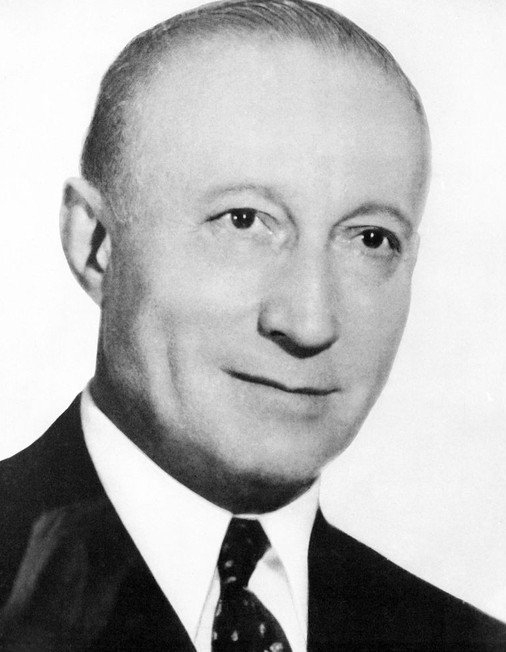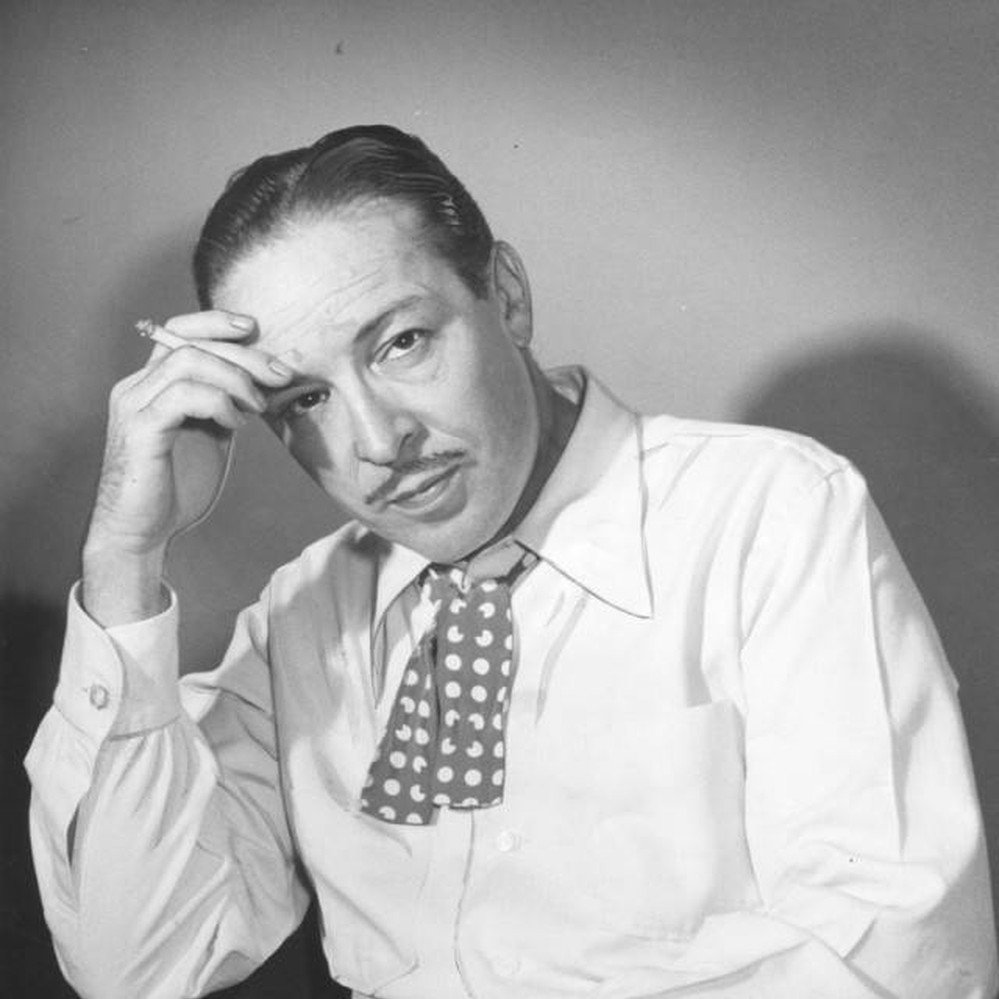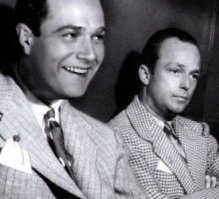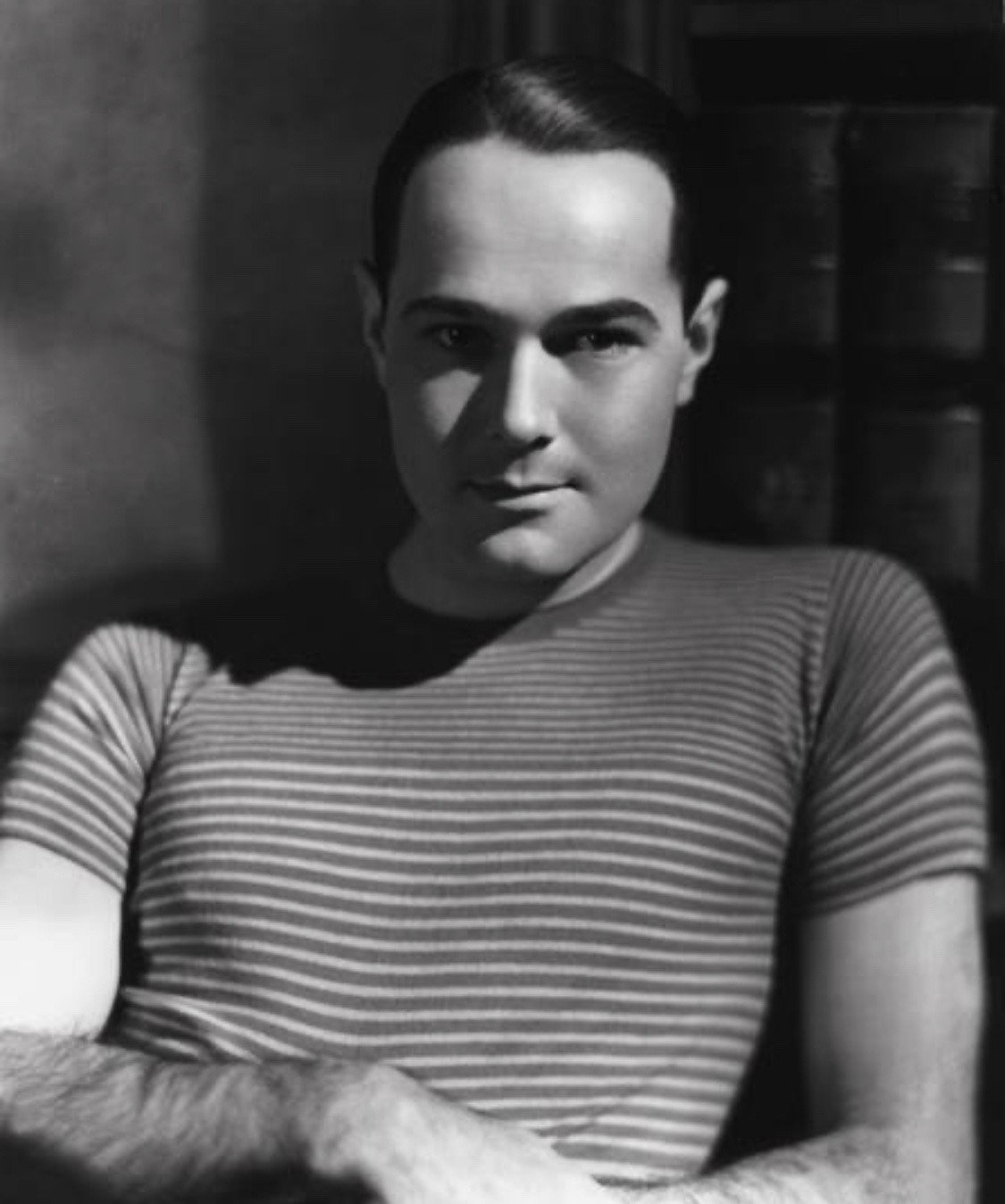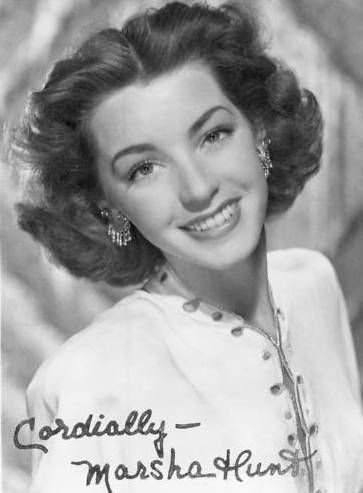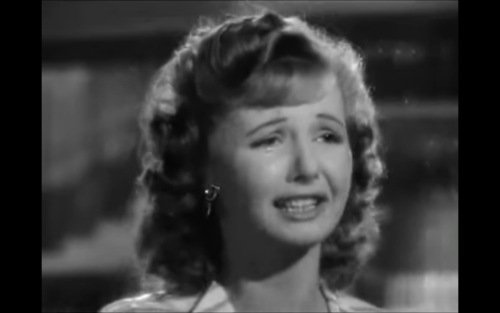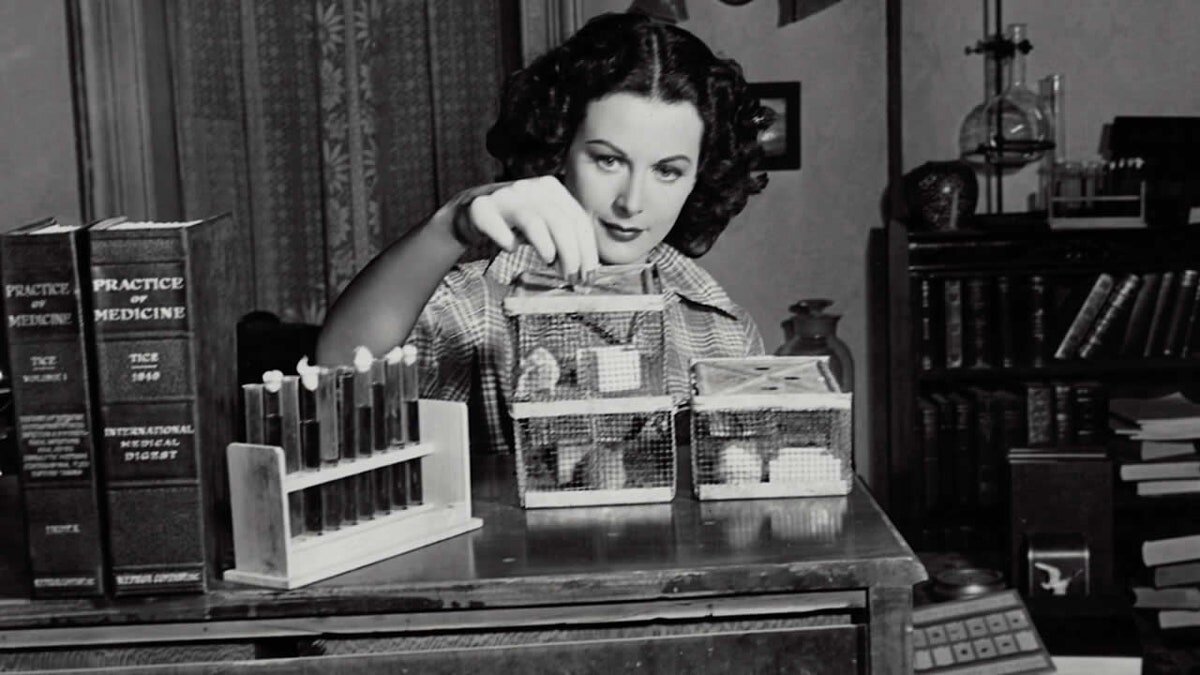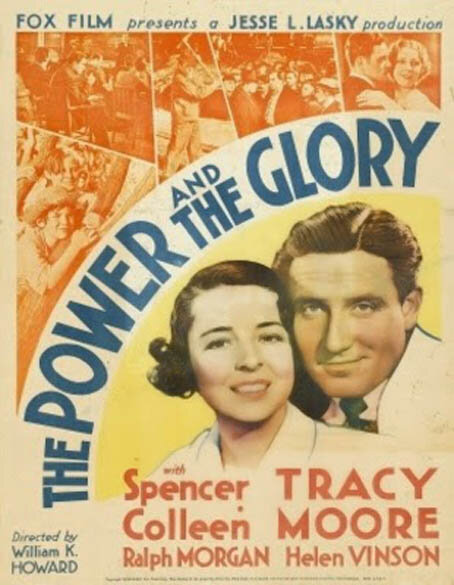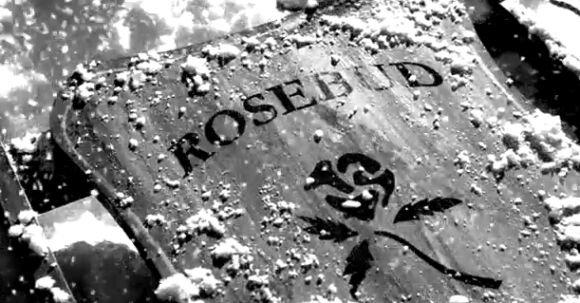In his 1953 autobiography, The Public is Never Wrong, the then 80-year old Adolph Zukor wrote:
My supreme faith was in the public. I was convinced that audiences would create stars of its own.We built the modern movie industry on the star system, but the public made the stars. All the skill of directors and all the booming of press-agent drums will not make a star. Only the audiences can do it
There was a group at Shanley’s Restaurant at Forty-third Street and Broadway. It was a theatrical rendezvous, much like Sardis would become years and years later.
Included in the “group” were William A. Brady, who had managed heavyweight boxing champions “Gentleman” Jim Corbett and Jim Jeffries and Adolph Zukor. The early, early movie industry owes much to brothers: Charles and Daniel Frohman, Jake and Lee Schubert (their brother Sam was killed in a train accident, otherwise there would have been three of them), Joe and Nick Schenck. A couple of the younger regulars – Jake and Lee Schubert –- had come down from Syracuse, and were fighting Klaw & Erlanger, the legitimate theatrical syndicate.
The Schencks had moved from the drugstore business in the Bronx to management of an amusement part, which occupied only part of their time. Joe booked vaudeville acts and Nick devoted most of his time to theater management.
Thus seven of the round-table regulars were in the business end – Brady, the Schuberts, the Schencks, Marcus Loew and the elfin Adolph Zukor. With the exception of William Brady, the regulars were all children of Eastern European Jewish immigrants, with only Loew having been born in New York.
Of these, Loew and Zukor would become the most important to the development of the motion picture industry – literally taking it from what most believed to be a passing fad to a multi-billion dollar industry. And although the name “Loews” is still well-known and “Zukor” largely forgotten, it is the latter who was, by far, the more important of the two in terms of the industry. Part of the reason is that Marcus Loew, he whose holding company would be the parent of MGM, died young – at age 57 in 1927 – Zukor, despite being merely 3 years younerg than Loew, would live for another half-century, finally dying of old age at 103.
So just who was Adolph Zukor?
He was born Adolph Cukor in the village of Ricse in Hungary on Jan. 7, 1873. He lost both of his parents - father Jacob, who ran a general store, and his mother, Hannah - before he reached the age of 10, and along with his brother Arthur, were sent to live with their uncle, Kalman Liebermann, a rabbi who hoped Adolph would follow in his footsteps. In his autobiography, Zukor noted: "I had the devil of a time persuading my uncle … that I wasn't cut out for the theological calling." His brother, Arthur, did, in fact, become a rabbi.
Zukor was an unexceptional student. At the age of 12, he was apprenticed to a store owner for whom he swept, ran errands, and did chores. He attended night school twice a week. Zukor got paid nothing for his work, but received clothes and shoes from an orphans' fund. Learning of America from letters sent by immigrants, Zukor decided that he wanted to travel there. In 1888, he asked the orphans' fund for money to travel to America. He received enough for a steamship ticket and $40.
In 1889, at the age of 16, he immigrated to America. In New York City, Zukor found work as an apprentice in a fur shop for $4 a week. Zukor stayed there for two years. When he left to become a "contract" worker, sewing fur pieces and selling them himself, he was nineteen years old and an accomplished designer. But he was young and adventuresome; three years later, the 19-year-old Zukor bought a ticket to Chicago, IL, drawn there by the 1893 Columbian Exposition, which commemorated Columbus' arrival in the New World. (The fellow who directed the exposition’s so-called Midway Plaisance its amusement section, which contained the world’s first Ferris Wheel – was a 23 year old San Franciscan named Sol Bloom, who would go on to have a storied career including nearly 30 years as a member of Congress.)
One planted in Chicago, Zukor joined a fellow former New Yorker, Morris Kohn, in a successful fur business. Zukor, who was somewhat shy and retiring, worked in the shop while Kohn handled the sales and customer relations. In the second season of operation, Zukor and Kohn's Novelty Fur Company expanded to twenty-five men and opened a branch factory. It was while on the road that Kohn first met Marcus Loew, then also a furrier, a dandy in a high hat and fur-lined coat.
Over the next 2 years, Zukor saved several thousand dollars. Around age 21, he returned to Hungary for a visit and saw some of Europe. He married Lottie Kaufman, also a Hungarian immigrant, in 1897. The couple would have two children, Mildred and Eugene.
After their firm, renamed Kohn & Company moved to New York in 1900, Zukor lived across from the Loews at 111th Street and Seventh Avenue, and were soon warm friends. The two started dining at Shanley’s with the rest of the impresarios. Zukor’s first serious interest in show business came through the conversation of a cousin, Max Goldstein, who in 1903 approached him for a loan to invest in exhibition pioneer Mitchell Mark's penny arcade business. Zukor joined forces with Mark to open the Automatic Vaudeville Company which featured Thomas Edison's phonograph recordings, as well as early motion pictures. The company soon expanded into Philadelphia, Boston and Newark thanks to another furrier, Marcus Loew.
Their penny arcade featured phonographs and short movies, as well as peep machines, a shooting gallery, punching bags, stationary bicycles, and candy. Zukor built his penny arcade business, the nucleus of his cinema empire, with the money he had made from inventing a patent snap for furs. The business did very well, bringing in $500 to $700 a day. Zukor decided to get out of the fur business and devote all his time to the arcade.
As Zukor tells the story in his autobiography, The Public is Never Wrong: At that time the center of show business in New York was at Fourteenth Street. In time, the conversation got around to the possibilities of a penny arcade in that section. Such a venture would cost a lot of money.
The total cost, the three partners estimated, would run to $75,000. We leased a building on East Fourteenth Street. A hundred or more peep machines were installed. about 60% of them phonographs and the rest motion pictures. The phonographs were more popular because changes of records were available. Sufficient film was hard to get.
Other slot machines delivered peanuts, candy, and the like. Everything cost a penny, a penny to get in and a penny a look, a listen, or a handful of food.
From the beginning the enterprise was a success. The daily take ranged from five hundred to seven hundred dollars. By the end of 1903, we were expanding to Newark, Philadelphia, and Boston, with the result that Kohn and I decided to close out our fur business to devote full energies to the arcades.
Marcus Loew, hearing us talk about the arcades, wanted in. Our next step was to convert the floor over the Fourteenth Street Arcade to a motion picture theater. In 1904 the Crystal Hall, as we named the theater, was ready
Crystal Hall patrons got a fifteen-minute show for a nickel. Some better material was arriving from France. Among the most popular films with the penny-paying public were the works of the Frenchman Georges Méliès. They were absolutely remarkable for their time.
In 1903, the first “story” picture, Edwin S. Porter’s The Great Train Robbery, caused an absolute sensation. The most important film of its time was less than a reel in length, with a showing time of less than ten minutes. Porter showed great talent and skill in telling his simple story, using flashbacks and a careful organization of scenes. It was a revolutionary film.
At the end of the film – which for the first time told a story from beginning to end – a lone gunman faces the camera and fires. People ran in fear for their lives; no one had ever seen anything like it . . . and they told their friends. With that one pistol shot, flickers – or “chasers” were quickly coming out of their infancy. Zukor, among others, sat up at took notice.
As a sideline to his promotion of Gentleman Jim Corbett and other ventures, impresario William A. Brady had bought the New York rights to the Hale’s Tours, developed by George C. Hale, ex-chief of the Kansas City fire department.
Hale had built a motion picture theater in the shape of a typical railroad coach of the day. As the film ran, the “car” moved back and forth, giving the feel of movement. In its time, it was as exciting as any ride at Disneyland. Zukor decided to go into Hale’s Tours with Brady.
Zukor's fascination with the growing field of motion pictures led him to create Hales' Tours, a simulated train ride that featured travelogue footage and elaborate sound effects. The venture failed, but Zukor rebounded after joining Marcus Loew's growing company as its treasurer. Nickelodeons were its stock and trade, but the public's desire for more motion pictures soon led them to purchase more businesses to convert into movie theaters. But he soon tired of the brick-and-mortar aspect of the business, and left Loews in 1912 to strike out on his own.
A perceived obstacle to his ambitions was the fact that movies, or "flickers" as they were then known, were very short, usually no more than 12 minutes. Others in the industry felt that American audiences would not want to see anything longer. Zukor felt that audiences would sit through a movie for an hour or more, if it had a good story. Zukor tested his theory by paying $40,000 (worth approximately $1.25 million in 2023 dollars) for the rights to a three-reel European religious movie, The Passion Play. Zukor described the audience's reaction in his autobiography: "The scene was one of the most remarkable I have ever witnessed. Many women viewed the picture with religious awe. Some fell to their knees. I was struck by the moral potentialities of the screen." The film had a good run and proved to Zukor that Americans would sit through longer pictures.
Soon afterward, Zukor learned of a French producer, Louis Mercanton, who wanted to make a four-reel movie starring the famous French actress Sarah Bernhardt, in her successful play Queen Elizabeth. Mercanton's project was being delayed for lack of funds. Zukor, in partnership with Daniel Frohman, advanced Mercanton $40,000 to secure the North American rights to the movie. It was the first test of his theory that American audiences sit through a film of this length.
On July 12, 1912, the movie premiered and their investment paid off when New York society elites attended the premiere at the Lyceum Theater. Historians consider this to be the first full-length film ever shown in America.
Zukor and Frohman also launched a road-show by touring the country with the film, which amassed some $200,000 in ticket sales. The pair used the proceeds to establish their own production company, Famous Players Film Company, with which Zukor hoped to create filmed versions of full-length classical plays. They rented the top two floors of the old Ninth Regiment Armory at 213-227 West Twenty-Sixth Street, between Seventh and Eighth Avenues.
For their publicity man they chose a smart young fellow named Ben P. Schulberg. In late 1912, the Connecticut-born Shulberg was in his early twenties, a newspaperman who recently had been doing publicity for Edwin Porter’s Rex Company.
Al Kaufman, who would become the Famous Players-Lasky studio manager, spent a good deal of his time hanging around outside the Lambs’ Club, buttonholing actors. He had no easy time hiring players. Zukor’s salary offers of from fifty to two hundred dollars a week ($1,500 to $6.000 in today’s money), according to the size of the role, worked a number of wonders.
Their first production was 1913's The Prisoner of Zenda, starring the famous Shakespearian stage actor named James K. Hackett. Zukor signed Hackett for $1,200 a week for 4 weeks work. The total budget for the film was estimated at forty thousand to fifty thousand dollars (upwards of $1.5 million in today’s money).
Though tiny compared with the multimillion budgets of today, it was three or four times the sum ever spent on a picture in America. Most one-reelers were ground out on a budget of a few hundred to a thousand dollars. The fact that each of their five reels would run nearly ten times, the top figure shows how much above the average they were paying for cast, authorship, scenery, costumes, and the rest.
The Prisoner of Zenda wound up reaping a sizable box office reward. The following year, Zukor and a former San Francisco-born vaudevillian named Jesse L Lasky went into business together, forming the Jesse L. Lasky's Feature Player Company. Zukor and Lasky quickly signed deals with Paramount Pictures Corporation to distribute their films throughout the United States. Lasky and his brother-in-law, Samuel Goldwyn, had just released "The Squaw Man" (1914), directed by a former stage actor named Cecil B. DeMille.
Jesse Lasky and his sister Bess had been traveling vaudevillians. When Bess quit the act in order to marry a prosperous, cantankerous glove salesman named Samuel Goldish (Gelbfisch), Jesse decided to become an agent. As with many, he began thinking about getting into flickers. In 1914, Jesse and Sam, with the financial backing of Adolph Zukor, who would distribute their first film through his Paramount Distribution Company, hired the young Cecile B. DeMille to direct their first picture . . . whatever it may be. DeMille had never directed a film. In matter of fact, it was his brother, William C. de Mille that Famous Players really wanted. They wound up paying a hefty sum for the rights to a tried-and-true Broadway play called “The Squaw Man.” They also agreed to pay $5,000 to the famous actor Dustin Farnum to star in the film version of the play he had made famous on Broadway.
A small crew traveled out west to make the picture. Before this time, 95% of all Westerns were filmed in Ft. Lee, New Jersey. Owing largely to the fact that Famous Players was going to be haunted – and hunted – by members of the so-called “Trust” – the hand-picked group approved of by Edison to make films – they decided to go out west. The “trust” was reaching for a strangle hold, beginning in 1910 with the Patents Company and following with the General Film Company.
The moment an “outlaw” piece of equipment or film appeared in a movie house, the license was withdrawn and the supply of “trust” pictures cut off. As an additional weapon, the “trust” contracted with the Eastman Kodak Company, major supplier of raw film, to sell stock only to licensed companies.
The companies involved in the trust were Edison, Biograph, Vitagraph, Essanay, Kalem, Selig, George Kleine, and the American branches of Pathé and Méliès.
The first person to challenge the Trust – and win – was Carl Laemmle, who headed up a conglomerate called “IMP” – the Independent Motion Pictures. IMP would eventually coalesce into Universal Studios.
Laemmle plays a very important role in the history of motion pictures. Heretofore, actors weren’t identified by name. The feeling was, that if the public knew the names of the people appearing on the screen, they, the actors, would demand salaries in excess of the $10 per week they were earning at the time. Instead, the public only knew them as “the girl with the curls” (Mary Pickford), “the man with the dimples” (Maurice Costello) or “the fat Man” (John Bunny). (Bunny, by the way, was at the time of his death in 1915, the most popular film comedian in the world. Within a year of his death, he had been completely forgotten. The reason? Charlie Chaplin had taken the world by storm.)
Laemmle changed all that via a ruse. About the time Zukor was becoming interested in motion pictures, the most popular – though unnamed – actor on screen was a woman known as “The Biograph Girl” – Florence Lawrence. The Biograph Company paid her the munificent sum of twenty-five dollars a week. Laemmle made arrangements to hire Lawrence at double her salary. Here’s where the ruse came in. Laemmle released an anonymous story to the press stating that “The ‘Biograph Girl’, whose real name was Florence Lawrence, was killed in a street car accident yesterday.” Laemmle then waited twenty-four hours while the horrific news quickly traveled across the country. The public was devastated to learn that their favorite star – whose name they now knew – was dead. Then, Laemmle held a press conference at which he denounced who ever had released the information, saying that it must’ve been done by his enemies, because Florence Lawrence, the former “Biograph Girl,” was now to be employed by IMP, in a one-reel film to be entitled, ironically, “Never Again.” From that point on stars, began making real money. Within 6 years Adolph Zukor would be paying Mary Pickford $20,000 a week, 52 weeks a year.
When DeMille and his crew arrived in Arizona to begin filming, they quickly came to realize that 100+ degree temperatures were no good for their film stock; it quickly melted. And so, they traveled further west until they came to a small town called Hollywood (pronounced in those days HollyWOOD). There, for $75.00 they took out a 3-month lease on a stable at the southeast corner of Selma and Vine. And that is where they shot their picture. Made at a cost of slightly under $20,000, the film grossed nearly a quarter of a million; Lasky, Goldfish, DeMille and Zukor were on their way to fame and fortune.
The picture drew the attention of Paramount Pictures Corporation, a distributor in search of features. The Paramount Pictures Corporation was not founded by Zukor, though he was partly responsible. The organizers were a group of film exchange men led by W.W. Hodkinson, who represented exchanges in the Far West. Its purpose was not to make pictures but to distribute them. Famous Players and Lasky signed an agreement to allow Paramount to handle their pictures, but quickly realized that they could reap bigger profits by controlling the distribution as well as the production. So Zukor purchased a large majority of Paramount stock to take control of the company, and in 1916, it was folded into a larger entity, the Famous Players-Lasky Corporation, with Zukor as its president and Lasky its vice-president. Goldwyn initially settled for vice-president status, but was eventually forced out; he would later help to establish Metro-Goldwyn-Mayer before launching one of the most successful independent producing careers in Hollywood history.
After consolidating his numerous subsidiary companies, including Paramount, Realart Pictures and the George M. Cohan Film Corporation, under the Famous Players-Lasky umbrella, Zukor set out to streamline his business. He signed many of the top stars of the period, including Mary Pickford, Douglas Fairbanks, Rudolph Valentino and Gloria Swanson. In doing so, he required that any exhibitor who wished to screen their films also had to purchase a year's worth of other Famous Players-Lasky releases, often sight unseen. This practice, known as "block booking," drew the ire of numerous exhibitors, including the First National Exhibitions Circuit, who boycotted Famous Players-Lasky in 1919. Faced with the loss of nearly 600 nationwide theaters, Zukor then began purchasing theater chains. Within a few years, he had snapped up hundreds of movie houses, making Famous Players-Lasky one of the largest theater owners in the world.
In 1921, the Federal Trade Commission (FTC) caught wind of Zukor's plan and charged Famous Players-Lasky and its subsidiaries with conspiracy and restraint of trade, which violated their anti-trust laws. Theater owners testified about the company's strong-arm tactics, which included building movie houses across the street from theaters that refused to accept block booking and even outright physical intimidation. In 1927, the FTC ruled that block booking was an unfair trade practice, and filed a cease and desist order against Zukor and his company. But Zukor had built his company into a formidable entity that could withstand such threats, even from the government. The profits he drew from his box office hits allowed him to make several significant purchases, including a hefty share of the Columbia Broadcasting System and the Balaban and Katz theater chain, which allowed him to expand his theater holdings to over 2,000 screens across the United States. He had also built a West Coast studio for production, which would eventually become Paramount Studios. An animation department, headed by Max and Dave Fleischer, was also presentin serious competition for Walt Disney's product. When faced with the FTC's charges, Zukor simply denied them. His stance was regarded as arrogance by both the media and the government, which responded with a massive anti-equity suit in 1929, charging Famous Players-Lasky and nine other studios of monopolizing 98 percent of domestic distribution. The following year, the Supreme Court declared the 10 studios guilty of violating anti-trust law.
Zukor had an interesting relationship with Mary Pickford, to say the least. There has never been anything just like the public adulation showered on Mary. It caught Zukor by surprise.
















